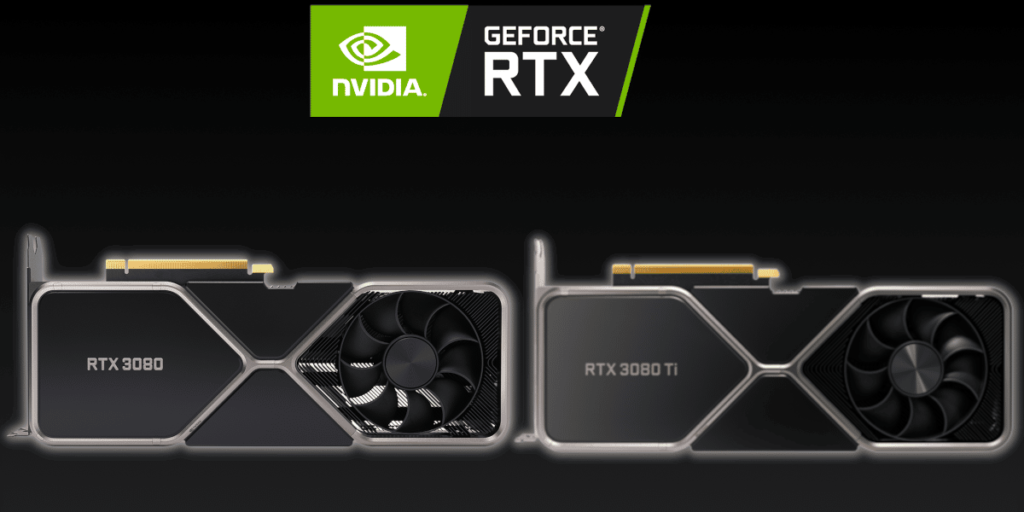
The FPS Review: Quick Compare
High-end 30 series Ampere technology. Both of these cards pack a wallop to be sure, but how much ahead does the 3080 Ti really come up? The 3080 launched on September 17th, 2020, while the 3080 Ti didn’t hit the shelves until June 3, 2021, quickly after its reveal. Their MSRP prices are surprisingly different, the base 3080 has a price tag of $699 while the 3080 Ti went to market at $1,199. That’s a 70% increase. So, what’s the big difference?
Before we delve into the difference between these two top contenders from Nvidia, consider taking a peek at our in-depth reviews on each model. You can find the 3080 here and the 3080 Ti over here. In them, we take a bit of a deeper dive into Ampere architecture. Also, we have some overclocking information available here, if that’s more your speed.
NVIDIA GeForce RTX 3080 and NVIDIA GeForce RTX 3080 Ti Specifications
| Specification | GeForce RTX 3080 | GeForce RTX 3080 Ti |
|---|---|---|
| Architecture | Ampere | Ampere |
| Process Node | SAMSUNG 8N | SAMSUNG 8N |
| CUDAs | 8704 | 10240 |
| Tensor Cores | 272 | 320 |
| Ray Tracing Cores | 68 | 80 |
| Boost Clock | 1710MHz | 1665MHz |
| Memory | 10GB GDDR6X | 12GB GDDR6X |
| Memory Clock | 19GHz | 19GHz |
| TDP/TBP | 320W | 350W |
| MSRP | $699 | $1199 |
So just based on stats it’s pretty easy to see the 3080 Ti is actually quite a bit faster compared to our base model here. With a fairly substantial jump in CUDas, the Ti’s specs are more comparable to a 3090 than a 3080. The 30-watt power difference might be enough to make a difference depending on your rig, if you’re already pretty close to your comfortable limits with a 3080 it might be in your best interest to upgrade the PSU.
Ray tracing sees a similar significant jump as with the CUDA cores, which on paper should result in a fairly sizeable difference at higher resolution RTX. You could argue that the difference between 10GB memory and 12GB is sort of negligible at this point, but with certain games encroaching past 6GB and onto the 8GB recommended already, it shouldn’t be too long until you start seeing a big difference between the two. Otherwise, the 3080 Ti is a clear winner up and down.
Gaming Performance
Next up let’s see how these two cards compare in some real-world gaming environments:
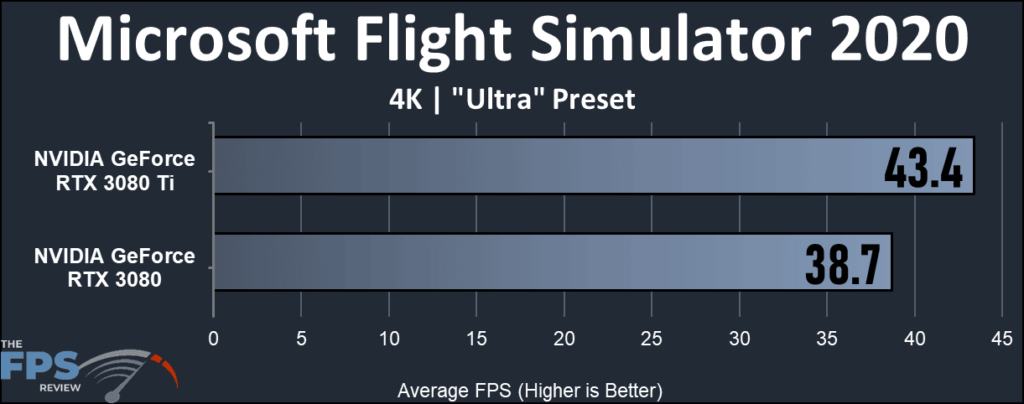
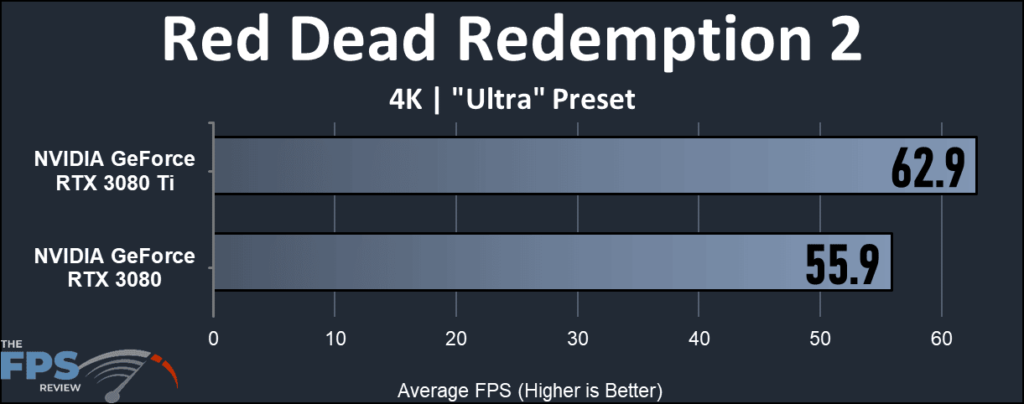
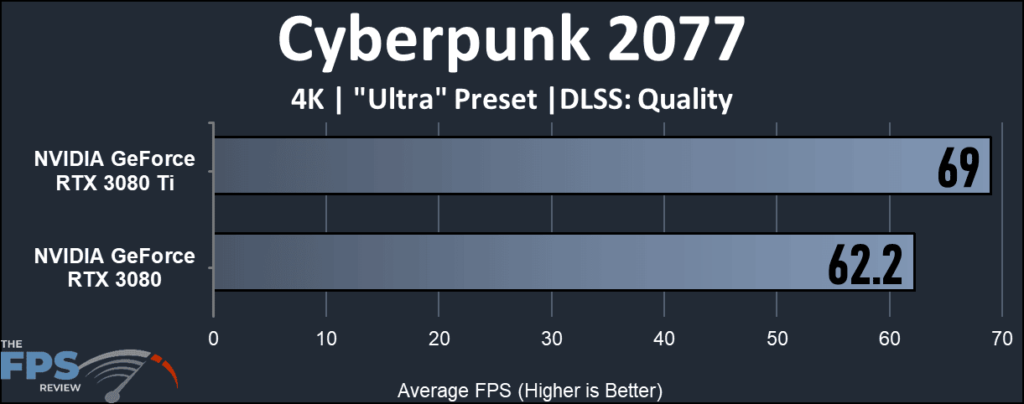
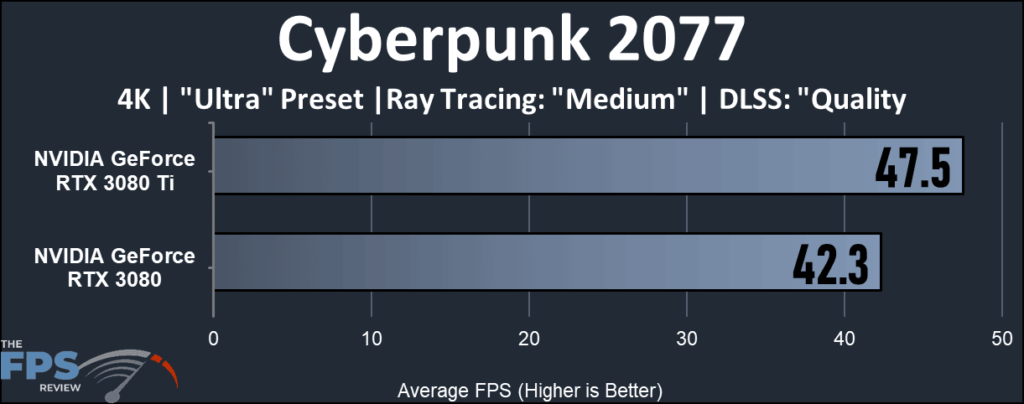

Specifically, we’re looking at the highest possible settings on most of these games, aside from the two Cyberpunk settings just for comparison’s sake. DLSS is also running just as it’s a fairly significant jump in frames for negligible loss in clarity.
Under 4k Ray Traced max settings the 3080 Ti closes in on the 60 FPS mark we’re looking for, but doesn’t quite make it. Whereas the 3080 is on its heels, but there’s a notable difference of around ~10% in most of these games. Outside of DLSS the gap gets a bit larger, but most will be playing with it on anyways.
You’ll have to drop fewer settings to achieve a 60 FPS 4k Ray Traced experience when running the 3080 Ti. Since both of these cards mostly live in the secondary market, where their prices are a bit closer, the 3080 Ti seems to be the way to go.
Conclusion
What we see is the 3080 Ti definitively does come out ahead of the 3080, but by less than you might expect by the MSRP difference. It’s a faster card no doubt, but it’s not like you’d be losing a whole lot going down to the 3080. MSRP, of course, is a completely unrealistic price to be paying these days so the answer gets even murkier considering the supply issue.
There’ll probably be a day in the not too distant future where we see the 3080 Ti fully outpacing the 3080, but I don’t think that day is quite here yet. They’re both solid cards swinging in the same ballpark. If you manage to get your hands on either, I believe you’ll be quite satisfied in both cases.
